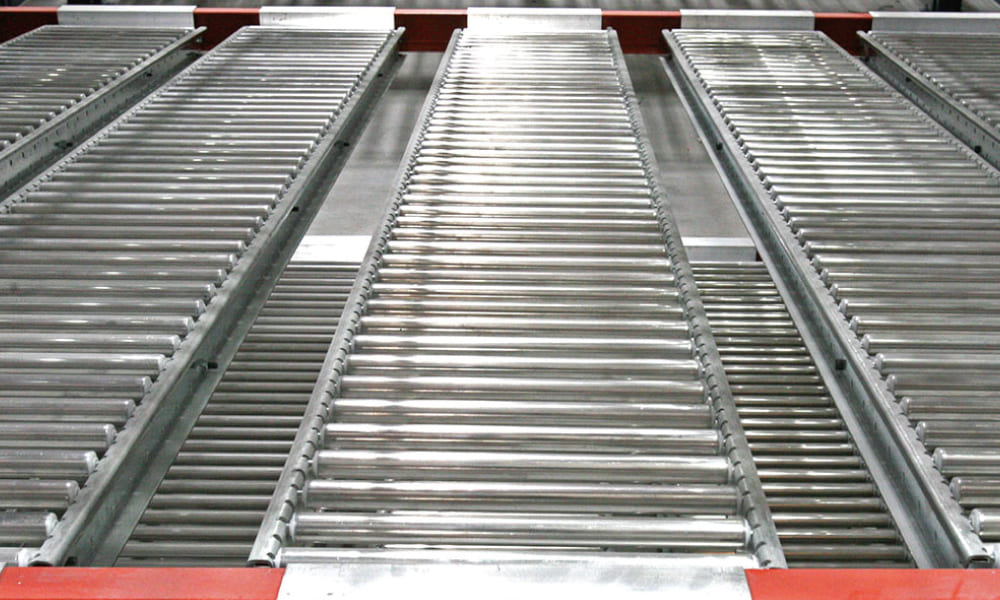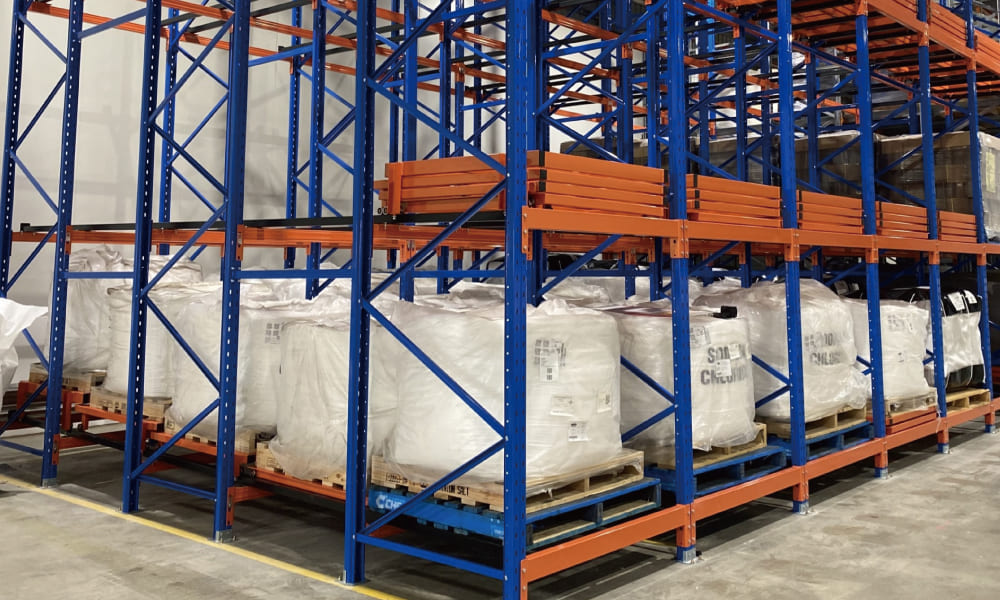Call Us :8615298359310
Call Us :8615298359310
Pallet Live Storage, a high-density storage solution, not surprising, offers an effective way to optimize warehouse capacity while maintaining
the stock flow rate. But what exactly is pallet live storage, and how can it transform your warehouse operations?
In this comprehensive guide, we’ll explore the ins and outs of pallet live storage, its benefits, types, and strategies to help you understand why this system is rapidly becoming a game-changer in the logistics world.

Pallet Live Storage refers to a dynamic storage system designed to handle the movement of heavy-duty items by enabling pallets to flow smoothly along a slightly inclined bed of rollers.
This system allows goods to move from the loading end to the unloading end through the force of gravity, minimizing the need for manual handling. It’s an ideal solution for high-density environments where space-saving and stock turnover control are key priorities.
The pallet live storage system is particularly useful for businesses looking to optimize stock management with fast-moving products. By automating the flow of products, pallet live storage reduces time spent on handling and retrieval, streamlining the entire warehouse operation.
There are two primary types of pallet live storage systems:

Pallet live storage systems are built with a slightly inclined roller bed that allows pallets to glide from the loading area to the retrieval point through gravity. The system can be set up for either FIFO (First In, First Out) or LIFO (Last In, First Out) operations.
In FIFO systems, the first pallet loaded is the first one to be retrieved. This is ideal for perishable goods or products with expiration dates, where stock turnover control is crucial. In LIFO systems, the last pallet loaded is the first one retrieved, making it better suited for items with longer shelf life or less frequent stock rotation.
Key Benefits of Pallet Live Storage
Practical Tips for Implementing Pallet Live Storage
When considering the switch to pallet live storage, keep these strategies in mind to maximize the system's potential:
1. Analyze Your Stock Rotation Needs: Determine whether a FIFO or LIFO setup best suits your products. For perishable goods or items with a short shelf life, FIFO systems are crucial, whereas LIFO works well for items that don’t require frequent stock turnover.
2. Optimize Aisle Width: Ensure that the layout of your warehouse supports the smooth flow of pallets. Reducing aisle width in favor of vertical storage can help you make the most of your space.
3. Leverage Automation: While pallet live storage uses gravity for the actual movement of pallets, you can integrate autonomous mobile solutions like robotic forklifts or shuttle systems to further streamline the loading and retrieval process.
4. Evaluate Load Capacities: Ensure your pallet live storage racks are capable of supporting the weight and size of your pallets. The roller beds should be equipped to handle the specific loads that pass through your warehouse.

Gravity-fed pallet live storage is an ideal solution for companies that need first-in, First Out (FIFO) stock rotation. This system is particularly beneficial for industries that handle perishable goods, pharmaceuticals, or items with expiration dates, where stock turnover control is essential.

Push-back pallet live storage is designed for Last In, First Out (LIFO) operations, making it suitable for businesses with non-perishable goods or operations where the number of SKUs prevails over the volume of each SKU. This system allows for greater flexibility in loading and retrieval, as both processes occur from the same side of the rack.
In some cases, warehouses may require a hybrid solution where both FIFO and LIFO systems are implemented together to meet varying inventory needs. For example, a warehouse could use gravity-fed pallet live storage for perishable items on one side, while employing push-back racking for non-perishable or slower-moving goods.
Conclusion
Looking to take your warehouse to the next level? Explore pallet live storage today and experience the benefits of increased inventory control, optimized space utilization, and enhanced efficiency.
1. What Industries Benefit Most from Pallet Live Storage?
Industries with high-volume storage needs, such as food and beverage, pharmaceuticals, retail, and manufacturing, find pallet live storage particularly beneficial. Companies dealing with perishable goods can ensure efficient stock rotation, while businesses with high SKU counts can manage large inventories without taking up excessive space.
2. How Does Pallet Live Storage Compare to Other Storage Solutions?
Compared to other storage systems like ASRS (Automated Storage and Retrieval Systems) or traditional pallet racking, pallet live storage offers a more straightforward and cost-effective solution for dynamic stock management. It requires less energy and investment compared to fully automated storage systems while still providing significant benefits in space-saving and operational efficiency.
Copyright © 2024 Jiangsu VISON Logistics Technology Co., Ltd. All Rights Reserved.  Network Supported
Network Supported
Sitemap | Blog | Xml | Privacy Policy